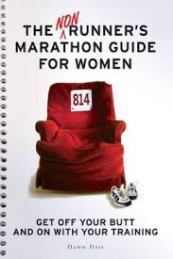When I started working at the MNW Elementary Library in 2011, I was dismayed at the dearth of collections that were present for students. Sure, we had plenty of books at all sorts of levels, but these were in three digital collections – and three physical spots – for patrons: Easy books (picture books), fiction (everything from Junie B. Jones to Harry Potter), nonfiction. Although students may be able to find books in their current reading level thanks to either a sticker indicating a book’s Accelerated Reader level or their own searching, neither choice was ideal. AR is problematic because students won’t discover books that would be completely appropriate and enjoyable for them, and searching can be frustrating for a student who doesn’t have the time or inclination to spend time perusing the stacks.
So before classes even started, I eyeballed fiction and added a new collection “Juvenile Fiction.” Here were the Junie B. Jones titles, the Magic Tree House series, and, my personal favorite, Captain Underpants. Books had a sticker affixed and were put in a different place in the library. Donna and I changed the books in the computer to this new collection, and both students and teachers seemed to appreciate this new system.
As the year continued, though, it became clear we hadn’t done enough. Where were new readers to find their books? Finding a book in picture books was hit-or-miss – there might be a great book like one of the Rookie Reader collection, but also there would be a book like Sparrow Girl that could be read and appreciated by high schoolers. Picture books are for both students and adults. There had to be a better way.
Last summer, then, Donna and I, as well as a high school volunteer, combed through the picture books and the JR collection, and came away with anther collection, “Juvenile Reader.” This is for the simplest books in the collection for early readers, like Sandbox Betty or Hop on Pop. Eventually, we added another collection, “Leveled Text,” for books like Amelia Bedelia and Henry and Mudge. These changes have been a great help to students and teachers who come in for part of their “Daily 5” rounds to find “good fit books.” By mid-year, students as young as first grade are quite adept at finding good fit books by themselves.

But we’re not done! This summer, we’re rethinking the fiction collections, at both the elementary and the secondary schools. We’re moving toward the bookstore model of fiction collections, using the BISAC subject headings, so the Fiction collection will be labeled differently in the LIS and on their spine labels, whether it be an adventure book, mystery, horror, or fantasy.

Data at similar-sized schools show this has a positive impact on circulation. I’m not concerned with numbers – I’m concerned with kids. As I quoted someone very smart at IASL:
I mean really – when I go to the public library, I know exactly what I want in fiction . . . certain authors. Maybe it’s an old favorite (Carl Hiaasen) or a new book I heard about (Where’d You Go, Bernadette?). But I rarely if ever browse fiction like I do nonfiction. And really – how do I browse nonfiction? By subjects! Maybe it’s books on libraries (021) or cookbooks (641.5) or basketry (746.4). Wouldn’t I like to browse subjects in fiction, too?
The thing that always scared me off of the bookstore model was this very fact: I can find any book I want in any public library, but I always, ALWAYS, have to ask for help at Barnes and Noble. But a session at the recent IASL conference gave me this eureka moment – sort subjects alphabetically. So in nonfiction, art goes before cooking which goes before history. In fiction, adventure goes before historical fiction which goes before mystery. AHA!
So what’s your big project this summer? (I have two others, but that will be left for another day.)






